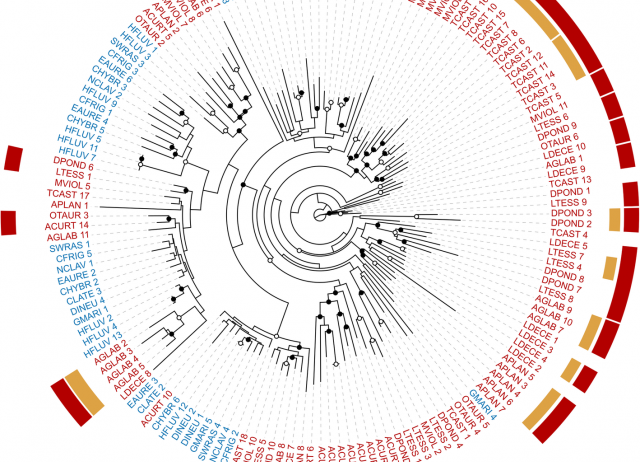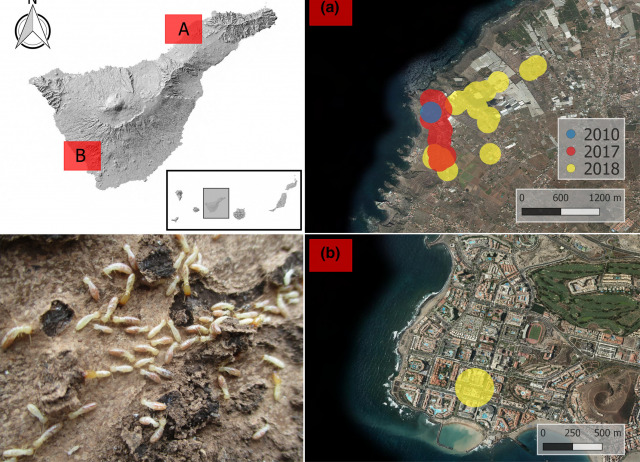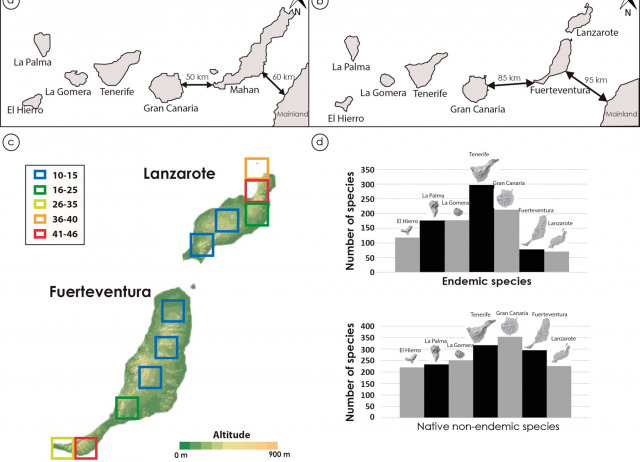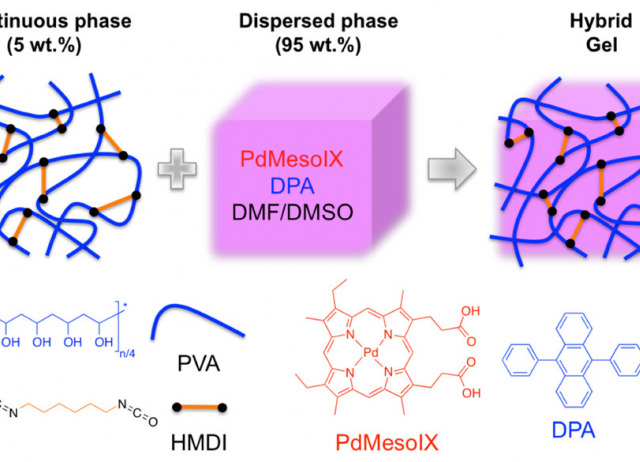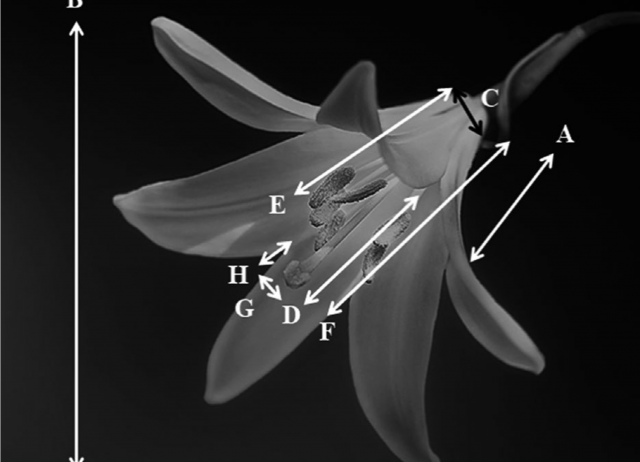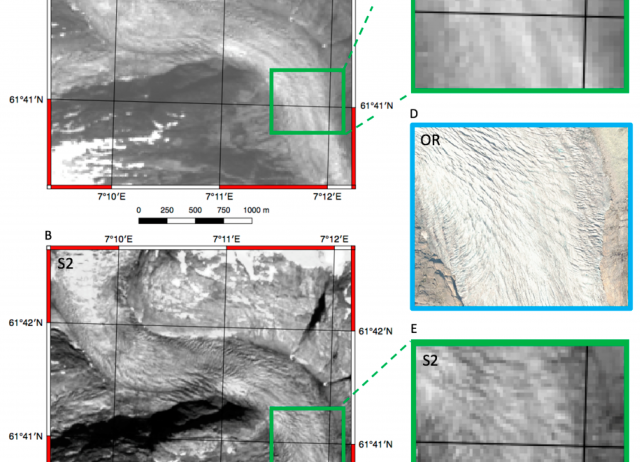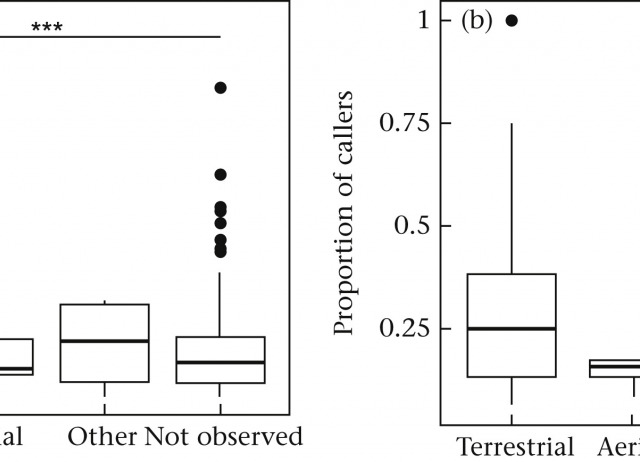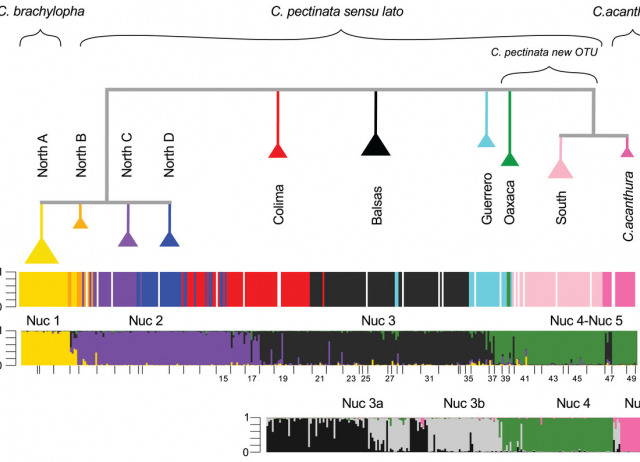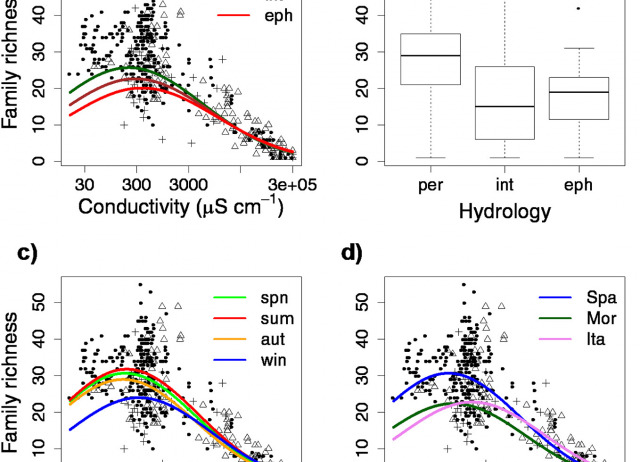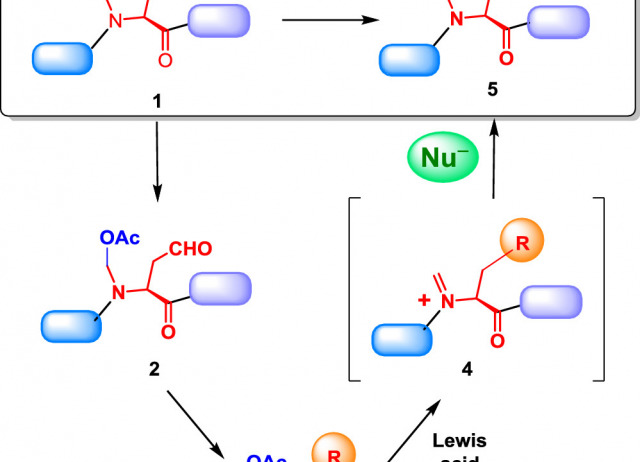
Conversion of "customizable Units" into N-Alkyl Amino Acids and Generation of N-Alkyl Peptides
An efficient conversion of hydroxyproline >customizable> units into new amino acids with a variety of N-alkyl substituents is described. The process is versatile and can afford valuable N-methyl amino acids and N,O-acetals. In addition, it allows the introduction of N-homoallylic substituents and N-chains with terminal ester, ketone, or cyano groups. These chains could be used for peptide extension or conjugation to other molecules (e.g., by olefin metathesis, peptide ligation, etc.). The transformation is carried out in just two (for R = CHOAc) or three steps (scission of the pyrrolidine ring, manipulation of the α-chain, and the N-substituent) under mild, metal-free conditions, affording products with high optical purity.
Saavedra, Carlos J.; Carro, Carmen; Hernández, Dácil; Boto, Alicia
Genomic signatures accompanying the dietary shift to phytophagy in polyphagan beetles
[Background] The diversity and evolutionary success of beetles (Coleoptera) are proposed to be related to the diversity of plants on which they feed. Indeed, the largest beetle suborder, Polyphaga, mostly includes plant eaters among its approximately 315,000 species. In particular, plants defend themselves with a diversity of specialized toxic chemicals. These may impose selective pressures that drive genomic diversification and speciation in phytophagous beetles. However, evidence of changes in beetle gene repertoires driven by such interactions remains largely anecdotal and without explicit hypothesis testing.
[Results] We explore the genomic consequences of beetle-plant trophic interactions by performing comparative gene family analyses across 18 species representative of the two most species-rich beetle suborders. We contrast the gene contents of species from the mostly plant-eating suborder Polyphaga with those of the mainly predatory Adephaga. We find gene repertoire evolution to be more dynamic, with significantly more adaptive lineage-specific expansions, in the more speciose Polyphaga. Testing the specific hypothesis of adaptation to plant feeding, we identify families of enzymes putatively involved in beetle-plant interactions that underwent adaptive expansions in Polyphaga. There is notable support for the selection hypothesis on large gene families for glutathione S-transferase and carboxylesterase detoxification enzymes. [Conclusions] Our explicit modeling of the evolution of gene repertoires across 18 species identifies putative adaptive lineage-specific gene family expansions that accompany the dietary shift towards plants in beetles. These genomic signatures support the popular hypothesis of a key role for interactions with plant chemical defenses, and for plant feeding in general, in driving beetle diversification.
Seppey, Mathieu; Ioannidis, Panagiotis; Emerson, Brent C.; Pitteloud, Camille; Robinson-Rechavi, Marc; Roux, Julien; Escalona, Hermes E.; McKenna, Duane D.; Misof, Bernhard; Shin, Seunggwan; Zhou, Xin; Waterhouse, Robert M.; Alvarez, Nadir
First report of the invasive Reticulitermes flavipes (Kollar, 1837) (Blattodea, Rhinotermitidae) in the Canary Islands
Reticulitermes flavipes, one of the most harmful subterranean termite pests, is reported for the first time from Tenerife (Canary Islands, Spain). Cytochrome oxidase II was sequenced from five specimens in order to confirm the identification. To date, this invasive species has been detected in a limited area in the northeast of the island, affecting buildings, crops and native plant species. Another colony with the identical haplotype found in the southwest, 60 km away from the main population, indicates that this invasive insect may be more widespread over the island.
Hernández-Teixidor, David; Suárez, Daniel; García, Javier; Mora, David
Pleistocene extinctions as drivers of biogeographical patterns on the easternmost Canary Islands
Subtropical islands are often viewed as refuges where Quaternary climatic shifts driving global episodes of extinction were buffered. Island biodiversity, however, may have been impacted by climatic fluctuations at local scales, particularly in spatially heterogeneous island systems. In this study, we generated a conceptual framework for predicting the potential impact of Pleistocene extinctions on the biogeographical pattern of the Canarian spermatophyte flora, with a focus on the easternmost Canarian islands (ECI). Then, we performed an exhaustive bibliographic revision (270 studies) to examine whether taxonomic, phylogenetic and phylogeographical data support our predictions. Although molecular information is limited for many lineages, the available data suggest that the majority of extant ECI plant taxa may be the result of relatively recent (<1 Ma) dispersal from surrounding insular and mainland areas. Different lines of evidence are compatible with the idea of a Pleistocene period of frequent lineage extirpation on ECI. Extinction may thus have provided new ecological opportunities for recent (re)colonization, with some cases of recent establishment mediated by facilitation. Considering background extinction on ECI, we describe five general patterns of colonization for Canarian plant lineages. In addition to factors related to island ontogeny and long-distance dispersal, we suggest that Pleistocene extinctions may have significantly contributed to extant biogeographical patterns in the Canarian archipelago, such as the biased distribution ranges of island plants and the low endemic richness on ECI. This new scenario provides testable hypotheses for future studies dealing with the phylogeography, taxonomy and conservation of terrestrial biodiversity on the Canarian islands, and possibly, on other near-shore islands.
García-Verdugo, Carlos; Caujapé-Castells, Juli; Illera, Juan Carlos; Mairal, Mario; Patiño, Jairo; Reyes-Betancort, Alfredo; Scholz, Stephan
The Prospect of Photochemical Reactions in Confined Gel Media
Nature is intrinsically able to control kinetics, conversion, and selectivity of biochemical processes by means of confined reaction environments such as enzyme pockets, bilayer membranes, micelles, vesicles, cells, or bioorganic frameworks. The main reason for this fact is the optimal molecular alignment and restricted motion of reactant molecules compared to those found in bulk solution. Under this inspiration, a number of synthetic photo-nanoreactors based on supramolecular self-assembled systems have been developed during the last decades, including mesoporous inorganic materials, microemulsions, micelles, vesicles, lipid bilayer foams, polyelectrolyte nanoparticles, etc. In a broader sense, nanoreactor technology constitutes nowadays a promising tool to enhance organic synthesis under sustainable reaction conditions. In general, nanoreactors change the essential properties of the molecules within them, thus affecting their chemical reactivity
Maiti, Binoy; Abramov, Alex; Pérez-Ruiz, Raúl; Díaz Díaz, David
Divergence in floral trait preferences between nonflower-specialized birds and insects on the Galápagos
[Premise of the Study] The characteristic scarcity of insects on remote oceanic islands has driven nonflower-specialized vertebrates to broaden their trophic niches and explore floral resources. From our previous studies in the Galápagos, we know that native insectivorous and frugivorous birds visit a wide range of entomophilous flowers and can also act as effective pollinators. Here, we tested whether opportunistic Galápagos birds show any preference for specific floral traits, and if so, this preference differs from that of insects, [Methods] Sixteen floral morphology and nectar traits of 26 native species were studied, as well as the frequency with which they are visited by birds and insects. Nonmetric multidimensional scaling (NMDS) was used to evaluate the distribution of flower traits values along two main dimensions and measure the similarity between the plants visited mostly by birds versus those by insects, [Key Results] NMDS of floral traits resulted in two species groups: (1) bell-shaped, white flowers with wider corollas at nectary level and higher nectar volume, associated with high bird visitation rates; and (2) bowl and tubular-shaped flowers with narrower corollas at nectary level and lower nectar volume, associated with high insect visitation rates, [Conclusions] Despite the divergence in floral trait preferences between opportunistic Galápagos birds and insects, bird-visited flowers display mixed traits not fitting the classical ornithophilous syndrome. This finding is compatible with the existence of a transitional or bet-hedging phenotype between insect and bird visitors and underscores the importance of coevolution and floral diversification in nonspecialized plant–visitor interactions.
Hervías-Parejo, Sandra; Heleno, Rubén; Nogales, Manuel; Olesen, Jens M.; Traveset, Ana
SenDiT: The sentinel-2 displacement toolbox with application to glacier surface velocities
Satellite imagery represents a unique opportunity to quantify the spatial and temporal changes of glaciers world-wide. Glacier velocity has been measured from repeat satellite scenes for decades now, yet a range of satellite missions, feature tracking programs, and user approaches have made it a laborious task. To date, there has been no tool developed that would allow a user to obtain displacement maps of any specified glacier simply by establishing the key temporal, spatial and feature tracking parameters. This work presents the application and development of a unique, semi-automatic, open-source, flexible processing toolbox for the retrieval of displacement maps with a focus on obtaining glacier surface velocities. SenDiT combines the download, pre-processing, feature tracking, and postprocessing of the highest resolution Sentinel-2A and Sentinel-2B satellite images into a semi-automatic toolbox, leaving a user with a set of rasterized and georeferenced glacier flow magnitude and direction maps for their further analyses. The solution is freely available and is tailored so that non-glaciologists and people with limited geographic information system (GIS) knowledge can also benefit from it. The system can be used to provide both regional and global sets of ice velocities. The system was tested and applied on a range of glaciers in mainland Norway, Iceland, Greenland and New Zealand. It was also tested on areas of stable terrain in Libya and Australia, where sources of error involved in the feature tracking using Sentinel-2 imagery are thoroughly described and quantified.
Nagy, Teodor; Andreassen, Liss M.; Duller, Robert A.; González, Pablo J.
Group-enhanced predator detection and quality of vigilance in a social ground squirrel
Animals may form groups for different reasons, and one major benefit of grouping in many species is reduced predation risk. In diurnal species, vigilance is used to detect predators, resulting in a trade-off between feeding activity and predation risk. Species can reduce the cost of this trade-off with low-quality vigilance – performing another behaviour while vigilant – in comparison to high-quality vigilance (only being vigilant). Two nonmutually exclusive hypotheses explaining an inverse relationship between individual vigilance and group size are the dilution effect, where predation risk decreases in larger groups, and collective detection, where larger groups have more individuals that may detect a predator. Two predictions that support collective detection but not the dilution effect are that (1) overall group (collective) vigilance will increase with increasing group size, even while individual vigilance decreases, and (2) at least one group member must be vigilant to detect potential danger and communicate that information to group members. To test these predictions, we recorded behavioural data on low- and high-quality vigilance and alarm calling in the gregarious Barbary ground squirrel, Atlantoxerus getulus. Barbary ground squirrels allocated more time to high-quality vigilance than low-quality vigilance. The collective detection hypothesis was partly supported: as group size increased, individual low- and high-quality vigilance did not decrease, but collective high-quality vigilance did increase. Furthermore, we found that repetitive alarm calling warned group members of terrestrial threats. Our results show that this invasive species displays specific antipredator behaviours to different aerial and terrestrial predators compared to predators in their endemic range. The low level of time allocated to low-quality vigilance indicates that natural selection strongly favours high-quality vigilance in this species despite the trade-off with foraging. Our study broadens our understanding of antipredator and risk-sensitive behaviour.
van der Marel, Annemarie; López-Darias, Marta; Waterman, Jane M.
Introgressive hybridization in a Spiny-Tailed Iguana, Ctenosaura pectinata, and its implications for taxonomy and conservation
| Introgression, the transmission of genetic material of one taxon into another through hybridization, can have various evolutionary outcomes. Previous studies have detected signs of introgression between western populations of the Mexican endemic and threatened spiny-tailed iguana, Ctenosaura pectinata. However, the extent of this phenomenon along the geographic distribution of the species is unknown. Here, we use multilocus data together with detailed geographic sampling to (1) define genotypic clusters within C. pectinata; (2) evaluate geographic concordance between maternally and biparentally inherited markers; (3) examine levels of introgression between genotypic clusters, and (4) suggest taxonomic modifications in light of this information. Applying clustering methods to genotypes of 341 individuals from 49 localities of C. pectinata and the closely related C. acanthura, we inferred the existence of five genotypic clusters. Contact zones between genotypic clusters with signatures of interbreeding were detected, showing different levels of geographic discordance with mtDNA lineages. In northern localities, mtDNA and microsatellites exhibit concordant distributions, supporting the resurrection of C. brachylopha. Similar concordance is observed along the distribution of C. acanthura, confirming its unique taxonomic identity. Genetic and geographic concordance is also observed for populations within southwestern Mexico, where the recognition of a new species awaits in depth taxonomic revision. In contrast, in western localities a striking pattern of discordance was detected where up to six mtDNA lineages co-occur with only two genotypic clusters. Given that the type specimen originated from this area, we suggest that individuals from western Mexico keep the name C. pectinata. Our results have profound implications for conservation, management, and forensics of Mexican iguanas. |
Zarza, Eugenia; Reynoso, Víctor H.; Faria, Christiana M.A.; Emerson, Brent C.
Evaluating anthropogenic impacts on naturally stressed ecosystems: Revisiting river classifications and biomonitoring metrics along salinity gradients
Naturally stressed ecosystems hold a unique fraction of biodiversity. However, they have been largely ignored in biomonitoring and conservation programmes, such as the EU Water Framework Directive, while global change pressures are threatening their singular values. Here we present a framework to classify and evaluate the ecological quality of naturally stressed rivers along a water salinity gradient. We gathered datasets, including aquatic macroinvertebrate assemblages and environmental information, for 243 river locations across the western Mediterranean to: a) gauge the role of natural stressors (salinity) in driving aquatic community richness and composition; b) make river classifications by encompassing the wide range of environmental and biological variation exhibited by Mediterranean rivers; c) provide effective biomonitoring metrics of ecological quality for saline rivers. Our results showed that water salinity played a pivotal role in explaining the community richness and compositional changes in rivers, even when considering other key and commonly used descriptors, such as elevation, climate or lithology. Both environmental and biologically-based classifications included seven river types: three types of freshwater perennial rivers, one freshwater intermittent river type and three new saline river types. These new saline types were not included in previous classifications. Their validation by independent datasets showed that the saline and freshwater river types represented differentiable macroinvertebrate assemblages at family and species levels. Biomonitoring metrics based on the abundance of indicator taxa of each saline river type provided a much better assessment of the ecological quality of saline rivers than other widely used biological metrics and indices. Here we demonstrate that considering natural stressors, such as water salinity, is essential to design effective and accurate biomonitoring programmes for rivers and to preserve their unique biodiversity.
Gutiérrez-Cánovas, Cayetano; Arribas, Paula; Naselli-Flores, Luigi; Bennas, Nard; Finocchiaro, Marta; Millán, Andrés; Velasco, Josefa
